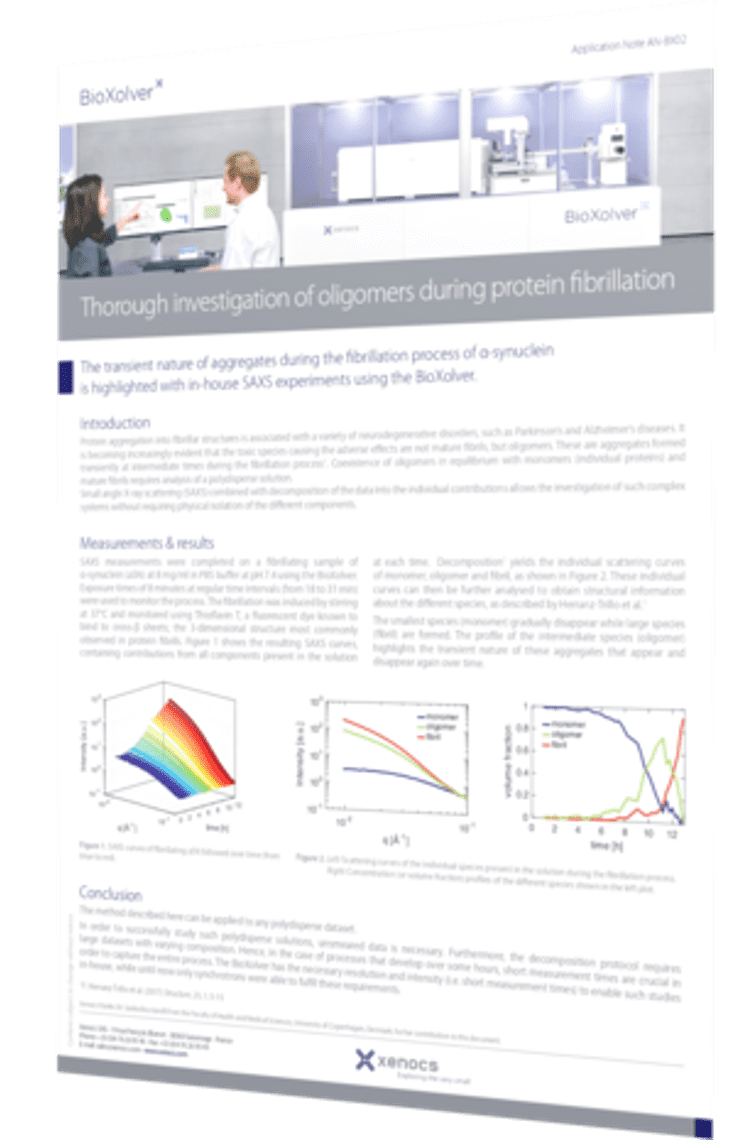The transient nature of aggregates during the fibrillation process of α-synuclein is highlighted with in-house SAXS experiments using the BioXolver.
Introduction
Protein aggregation into fibrillar structures is associated with a variety of neurodegenerative disorders, such as Parkinson’s and Alzheimer’s diseases. It is becoming increasingly evident that the toxic species causing the adverse effects are not mature fibrils, but oligomers. These are aggregates formed transiently at intermediate times during the fibrillation process1. Coexistence of oligomers in equilibrium with monomers (individual proteins) and mature fibrils requires analysis of a polydisperse solution.
Small angle X-ray scattering (SAXS) combined with decomposition of the data into the individual contributions allows the investigation of such complex systems without requiring physical isolation of the different components.
Want to read this application note?


































